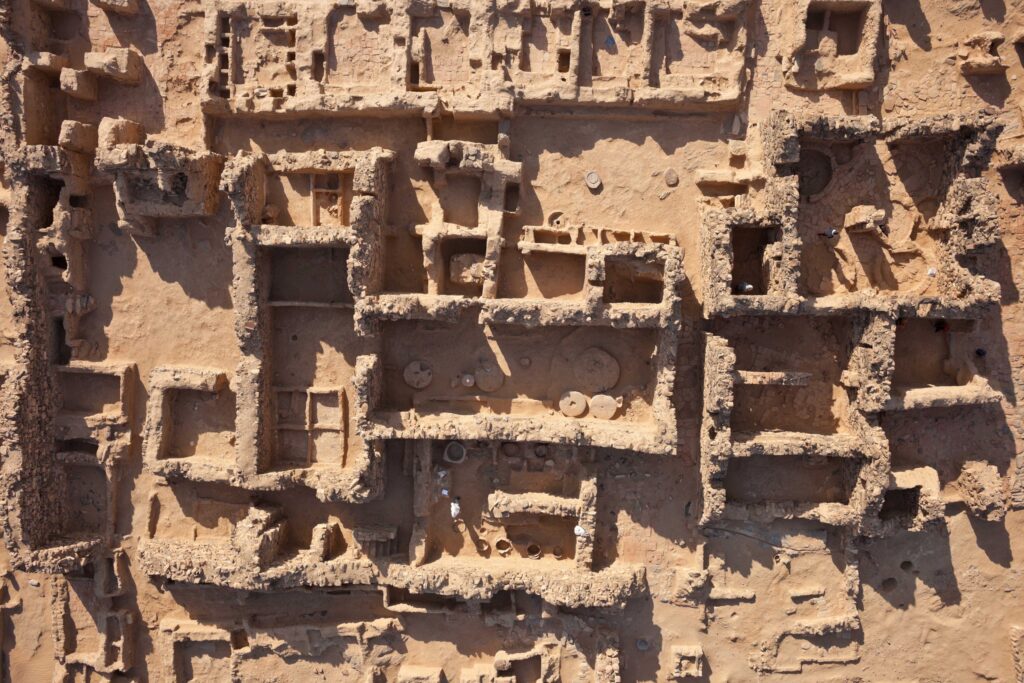Mill
The grain mill at Ghazali is of the only one found in any mediaeval monastery in Nubia (as of 2018.) Apart from huge millstones, there is a red granite fragment of a mill similar to the ancient ones in Pompei in Italy. The round structures with depressions on one side are bottoms of grain containers. Grain was the cornerstone of the monk’s diet. According to specialists one artaba (30-33 kg) of grain was one person’s necessary monthly allowance.
Oil press
Ghazali is also the only place in Nubia where the remains of an oil press have been found to date. The precise location and appearance of this installation are difficult to determine. The model of the press was therefore placed in the spot where one of its stones was discovered, and its form was recreated based on Egyptian analogies. As there is no evidence of olive cultivation in Nubia, the press was probably used for extracting oil from other plants, such as sesame.
Laundry/tannery
Large basins were found in two rooms of unknown function. These units could have been either a laundry or a tannery. More than 200 people inhabited the monastery in its heyday, so even if the monks practiced asceticism, they would have needed to wash their habits from time to time. Alternatively, the basins could have been used for soaking animal hides or fibers for making ropes. According to written sources, the production of leather objects and rope-making were two main activities of the monks.

